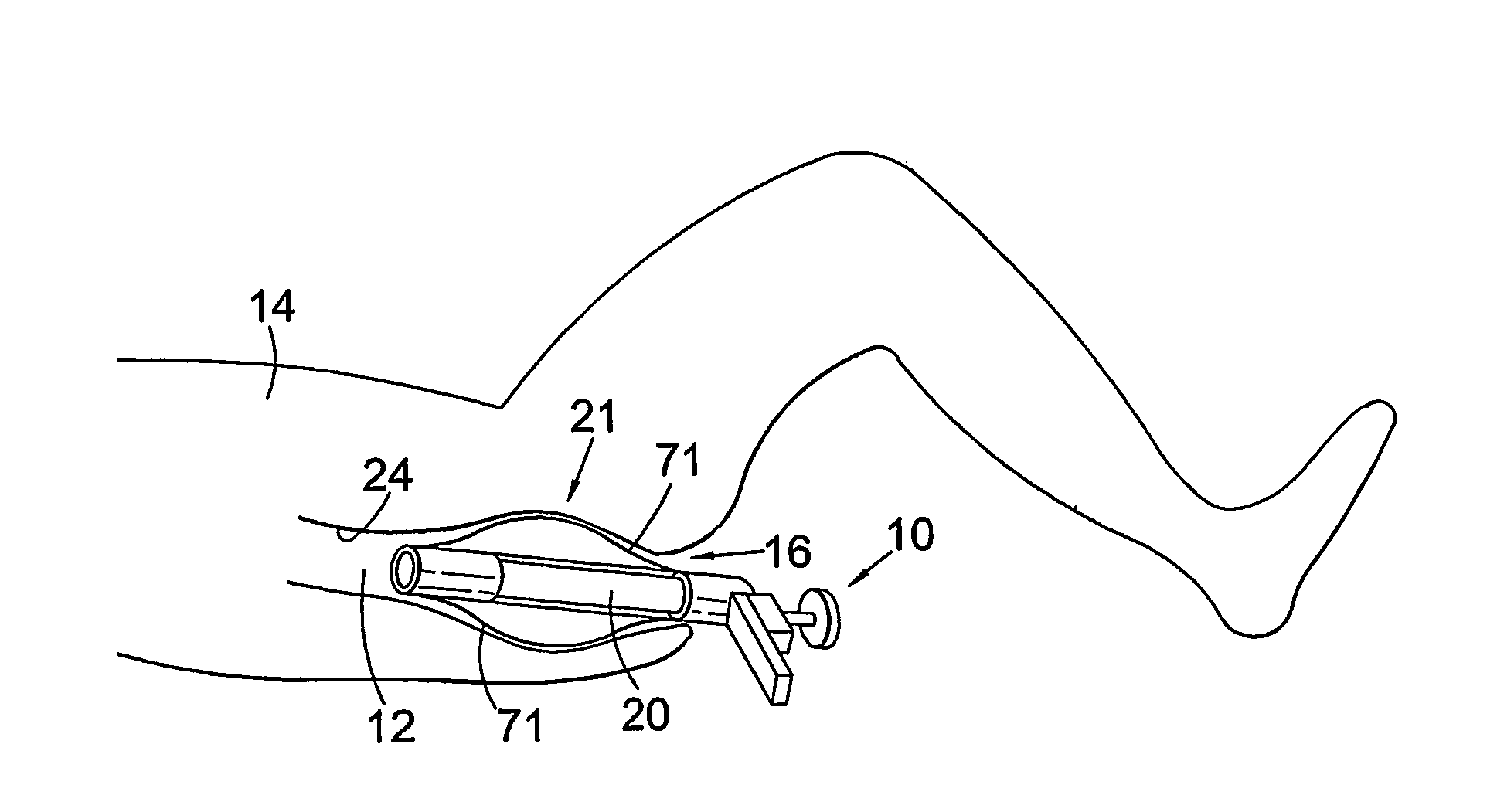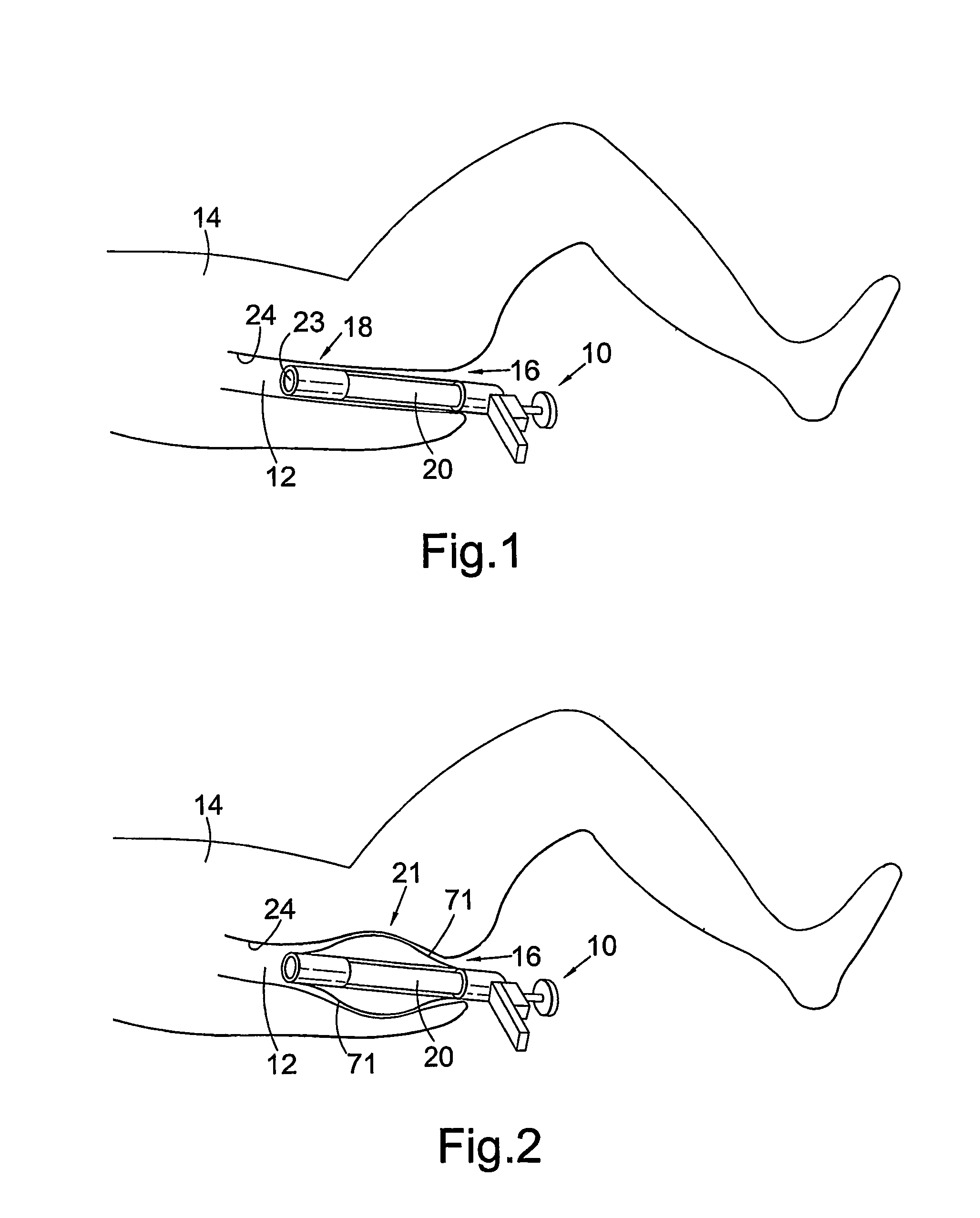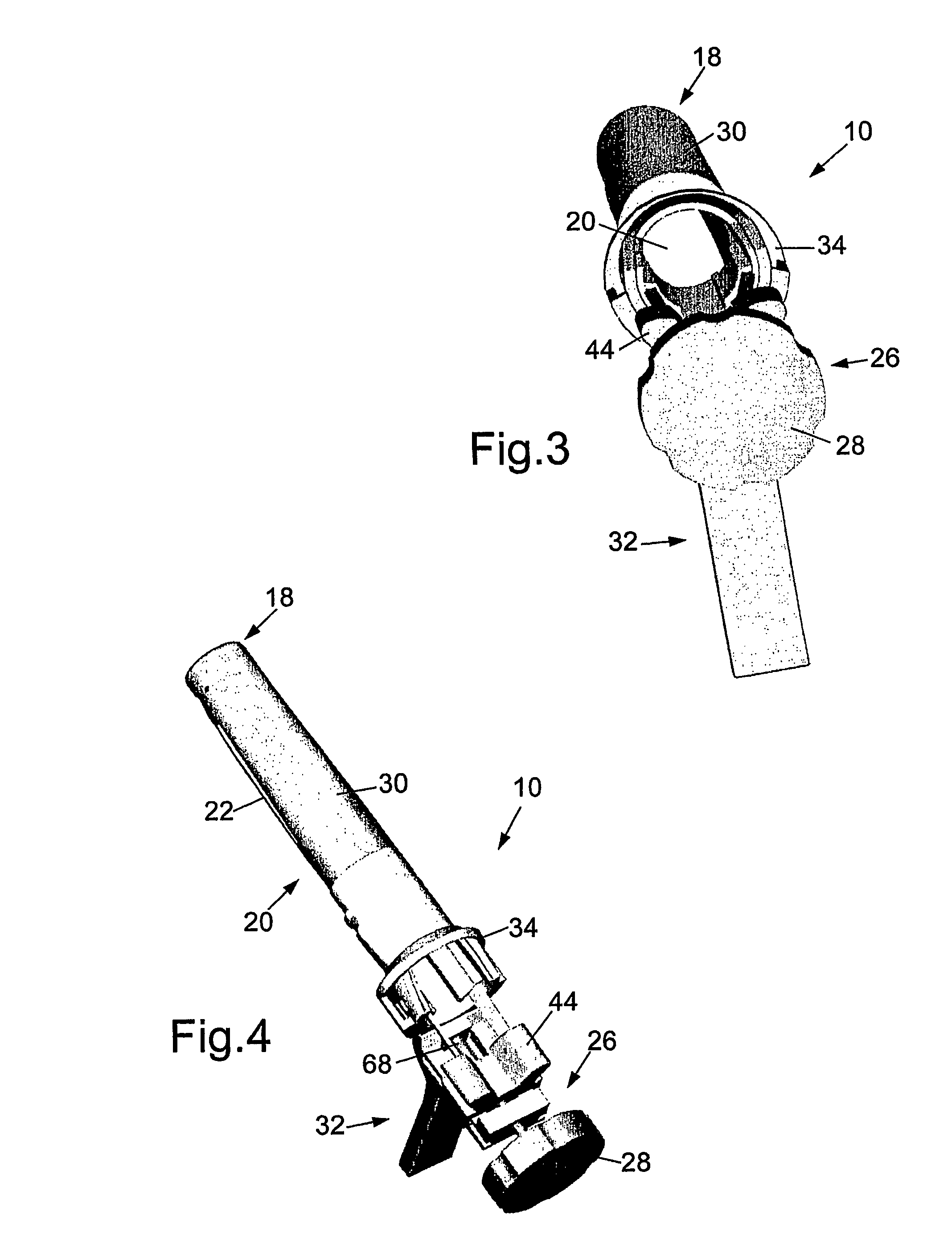Rectal expander
a technology of rectal expansion and expander, which is applied in the field of medical devices, can solve the problems of inability to use the instruments of surgeons, high cost of existing tem equipment, and surgical errors, and achieve the effect of preventing accidental injury and facilitating the insertion and placement of the apparatus
- Summary
- Abstract
- Description
- Claims
- Application Information
AI Technical Summary
Benefits of technology
Problems solved by technology
Method used
Image
Examples
Embodiment Construction
[0084]Turning firstly to FIG. 1, there is shown a schematic view of medical apparatus in accordance with a preferred embodiment of the present invention, the medical apparatus shown in use and indicated generally by reference numeral 10. The medical apparatus takes the form of a rectal expander having a particular utility in transanal endoscopic microsurgery (TEM), and is shown in use during a TEM procedure.
[0085]The rectal expander 10 is adapted for location at least partly within a body passage, and is shown in FIG. 1 located in a rectum 12 of a patient 14, the expander 10 inserted into the rectum 12 via the patient's anus 16. The expander 10 has a leading end 18 and an access area in the form of an opening 20 for access from the expander 10 into the rectum 12, and at least part of the opening 20 is spaced from the expander leading end 18. The expander 10 is controllably moveable between rest, collapse and stressed expansion positions for expanding the rectum 12, and is shown in F...
PUM
 Login to View More
Login to View More Abstract
Description
Claims
Application Information
 Login to View More
Login to View More - R&D
- Intellectual Property
- Life Sciences
- Materials
- Tech Scout
- Unparalleled Data Quality
- Higher Quality Content
- 60% Fewer Hallucinations
Browse by: Latest US Patents, China's latest patents, Technical Efficacy Thesaurus, Application Domain, Technology Topic, Popular Technical Reports.
© 2025 PatSnap. All rights reserved.Legal|Privacy policy|Modern Slavery Act Transparency Statement|Sitemap|About US| Contact US: help@patsnap.com



